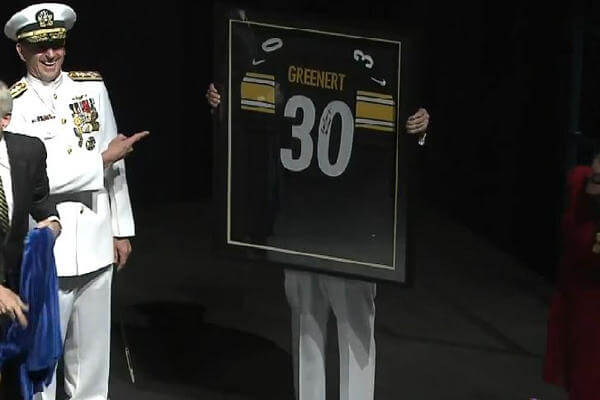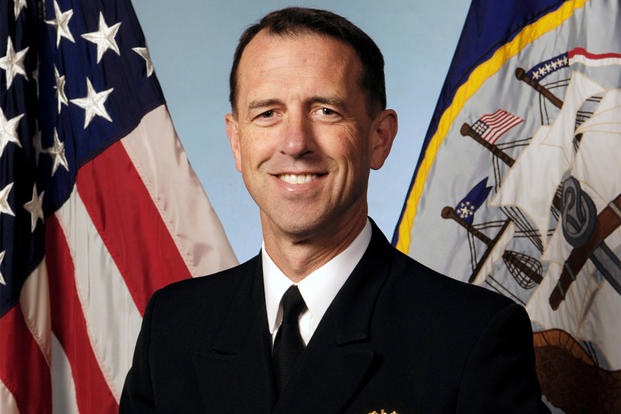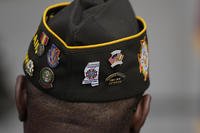Adm. John M. Richardson, a submariner who helped steer the Navy through a series of crises in recent years, on Friday became the sea service's top naval officer as the 31st chief of naval operations.
In a ceremony Friday at the U.S. Naval Academy in Annapolis, Richardson, who succeeded the retiring Adm. Jonathan Greenert, told the gathering that he was optimistic about the Navy and the country's future.
"Because there is nobody more creative, nobody more resilient, nobody who learns faster, who adapts quicker, who shows more initiative, and there is no better partner and there is no more dangerous competitor than the U.S. sailor," he said. "They are magnificent under any circumstances, in any situation, in any crisis, and certainly in any fight, they will find a way to win."
Richardson's most recent assignment was director of the Naval Nuclear Propulsion Program, where he oversaw multiple programs, including the acquisition effort to replace the nuclear missile-armed Ohio-class submarines that form a leg of the nation's nuclear triad.
Related Video:
Defense Secretary Ashton Carter in May recommended Richardson for the position to the White House, touting the admiral as a "go-to officer for many of the Navy's tough issues" and praising him for his handling problems dealing with integrity and ethics.
Richardson oversaw the investigation into charges of bribery involving high-ranking Navy officials and Glenn Defense Marine Asia, a company that provided a wide range of services to Navy ships in the Pacific. The investigation cleared the now-retired Adm. Samuel Locklear, former head of Pacific Command, but resulted in the censure of three two-star admirals for their involvement with the company, among other officials.
Richardson also led the Navy investigation into a shooting at the Navy Yard in Washington, D.C., where a delusional contractor killed 12 and wounded three before being shot and killed by police. The admiral also oversaw the Navy probe into sailors found to have cheated on a training test dealing with Navy nuclear reactors.
The ceremony also marked the retirement of Greenert, also a submariner, who served as CNO since 2011.
Carter recalled Greenert being among a Pentagon group that warned of "a defense capability gap" and advocated for payload over platforms and empowering junior officers to define problems and quickly develop solutions to them.
Navy Secretary Ray Mabus noted Greenert's four-year tenure saw the challenges faced by the spending reductions, a government shutdown, hiring freezes and employee furloughs.
"All while the world was becoming more volatile and violent and more in need of the United States Navy," Mabus said.
Greenert, in his remarks, said he learned that "the moral component of leadership is the foundation ... of integrity, trust, unconditional trust."
"Issues are transitory," he said, "they come and go. Principle will get you through all of that."
-- Bryant Jordan can be reached at bryant.jordan@military.com



























